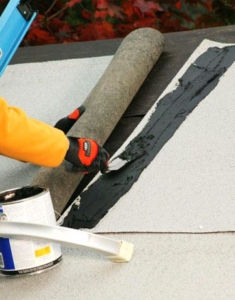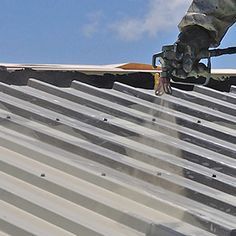Roof Lifespan: How Often Should You Replace Your Roof
A roof is one of the most important parts of a home’s protection. It shields your home from the elements and provides insulation to keep your home comfortable year-round. However, a roof won’t last forever, and knowing when to replace it is essential to maintaining your home’s protection. In this blog post, we’ll discuss the lifespan of roofs and how often they should be replaced.
Factors that Affect Roof Lifespan
- Climate and weather conditions – harsh weather, such as heavy rain, hail, or snow, can wear down a roof more quickly than milder climates
- Roofing material and quality – different materials have different lifespans, and the quality of the material can also affect how long it lasts.
- Maintenance and upkeep – regular inspections, cleaning, and repairs can help prevent small problems from becoming bigger and extend a roof’s lifespan.
- Installation quality – a roof that’s installed correctly is more likely to last longer than one that’s not installed correctly
- Roof pitch – the pitch of the roof can affect how long it lasts, with steeper roofs generally lasting longer than flatter roofs
- Sun exposure – excessive sun exposure can cause a roof to age prematurely and shorten its lifespan.
- Ventilation – proper ventilation can help regulate temperature and humidity, preventing moisture buildup that can lead to rot and other problems that shorten a roof’s lifespan.
Average Lifespan of Common Roofing Materials
|
ROOFING
|
YEARS
|
|
Aluminum Coating
|
3 to 7
|
|
Asphalt (architectural)
|
30
|
| Asphalt Shingles (3-tab) |
20
|
|
BUR (built-up roofing)
|
30
|
|
Clay/Concrete
|
100+ |
|
Coal and Tar
|
30
|
|
Copper
|
70+
|
|
EPDM (ethylene propylene diene monomer) Rubber
|
15 to 25
|
|
Fiber Cement
|
25 |
|
Green (vegetation-covered)
|
5 to 40 |
|
Metal
|
40 to 80
|
|
20
|
|
| Simulated Slate |
10 to 35
|
|
Slate
|
60 to 150
|
| TPO |
7 to 20
|
|
Wood
|
25 |
Source: InterNACHI
Signs That Your Roof May Need Replacement
Knowing when to replace your roof is crucial. Here are some signs that your roof may need replacement:
- Age of the roof: If your roof is approaching the end of its expected lifespan, it’s a good idea to start planning for a replacement.
- Visible wear and tear: Cracked or missing shingles, rusted metal, or other visible signs of damage can indicate that your roof needs to be replaced.
- Water damage or leaks: If you’re experiencing water damage or leaks in your home, your roof may be the culprit.
- Higher energy bills: If your energy bills are increasing, it could be a sign that your roof is not properly insulated and that it’s time for a replacement.
How Often Should You Replace Your Roof?
How often you should replace your roof depends on several factors, including the type of roofing material, quality of installation, and climate. Here are some general guidelines for how often to replace common roofing materials:
- Asphalt shingles: 15-30 years
- Metal roofing: 30-50 years
- Clay or concrete tiles: 50+ years
- Wood shingles or shakes: 20-25 years
- Slate: 75-200+ years
It’s important to note that these are general guidelines, and your roof’s lifespan may vary depending on other factors. For example, if you live in an area like Florida with severe weather conditions or your roof was not installed correctly, you may need to replace it sooner than the recommended timeframe.
Hiring a Reliable Roofing Contractor
Finding a reliable and professional roofing contractor to replace your roof can be daunting, but there are several ways to simplify the process. Here are some tips on how to find a contractor to replace your roof:
- Ask for referrals: Talk to friends, family members, neighbors, or colleagues who have recently had their roofs replaced, and ask for recommendations for a reliable and reputable roofing contractor.
- Check reviews and ratings: Look for roofing contractors online and check their reviews and ratings on websites like Yelp, Angie’s List, or the Better Business Bureau. This can give you an idea of their reputation and level of customer satisfaction.
- Verify their credentials: Make sure the roofing contractor you choose is licensed, insured, and certified. Check with your state’s licensing board to verify their license, and ask for their insurance certificates and certifications from roofing material manufacturers.
- Get multiple quotes from at least three roofing contractors to compare their pricing, services, and warranties.
- Ask for references: Ask the roofing contractor for references from past customers and follow up with them to get feedback on their experience with the contractor.
- Look for a local contractor: Choosing a local contractor can be beneficial because they are familiar with the local climate and building codes and are more likely to be available for follow-up or repairs in the future.
- Review the contract: Before signing a contract, review it carefully and make sure it includes all the details of the project, including the scope of work, materials to be used, payment terms, and warranty information.
Here are 10 tips for how to care for your roof and some elaboration on each tip:
- Inspect your roof regularly: Make a habit of inspecting your roof regularly, especially after major weather events. Look for signs of damage or wear and tear, such as cracked or missing shingles, rusted metal, or damaged flashing.
- Keep your roof clean: Regularly cleaning your roof can help prevent the buildup of debris, such as leaves, branches, or dirt, which can trap moisture and cause damage to your roof over time.
- Trim trees and vegetation: Overhanging tree branches or vegetation can scratch your roof or cause damage during high winds or storms. Make sure to trim back any branches or vegetation that could potentially damage your roof.
- Check your gutters: Make sure your gutters are free of debris and are functioning properly. Clogged gutters can cause water to back up and damage your roof or the fascia boards.
- Ensure proper ventilation: Proper ventilation in your attic can help regulate temperature and humidity, preventing moisture buildup that can lead to rot and other problems that shorten your roof’s lifespan.
- Fix leaks promptly: If you notice a leak or water damage inside your home, address the issue promptly to prevent further damage to your roof or your home’s interior.
- Don’t walk on your roof: Walking on your roof can cause damage to your shingles or tiles, and it can be dangerous. Leave roof inspections and repairs to professionals with the proper equipment and training.
- Hire a professional for repairs: Regular roof maintenance and repairs should be left to professionals with the expertise and equipment necessary to safely and effectively care for your roof.

Use caution with DIY repairs: Follow proper safety procedures independently if you make minor repairs. If you’re uncomfortable working on your roof, it’s best to leave repairs to the professionals.
Replace your roof when necessary: No roof lasts forever; eventually, all roofs must be replaced. Make sure to replace your roof when it’s reaching the end of its lifespan or showing signs of significant damage.
Conclusion: Roof Lifespan: How Often Should You Replace Your Roof
Understanding the lifespan of your roof and when to replace it is essential to maintaining your home’s protection. Regular inspections and maintenance can help prolong the lifespan of your roof, but eventually, all roofs need to be replaced. If you’re unsure about the condition of your roof or when it should be replaced, consult a professional roofing contractor for an inspection and estimate.





